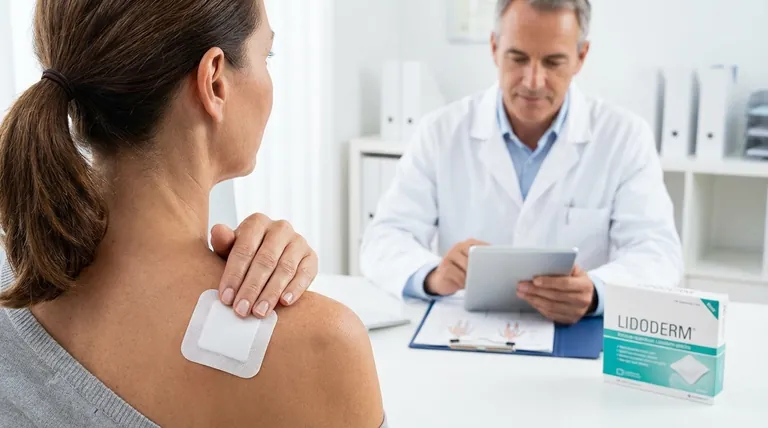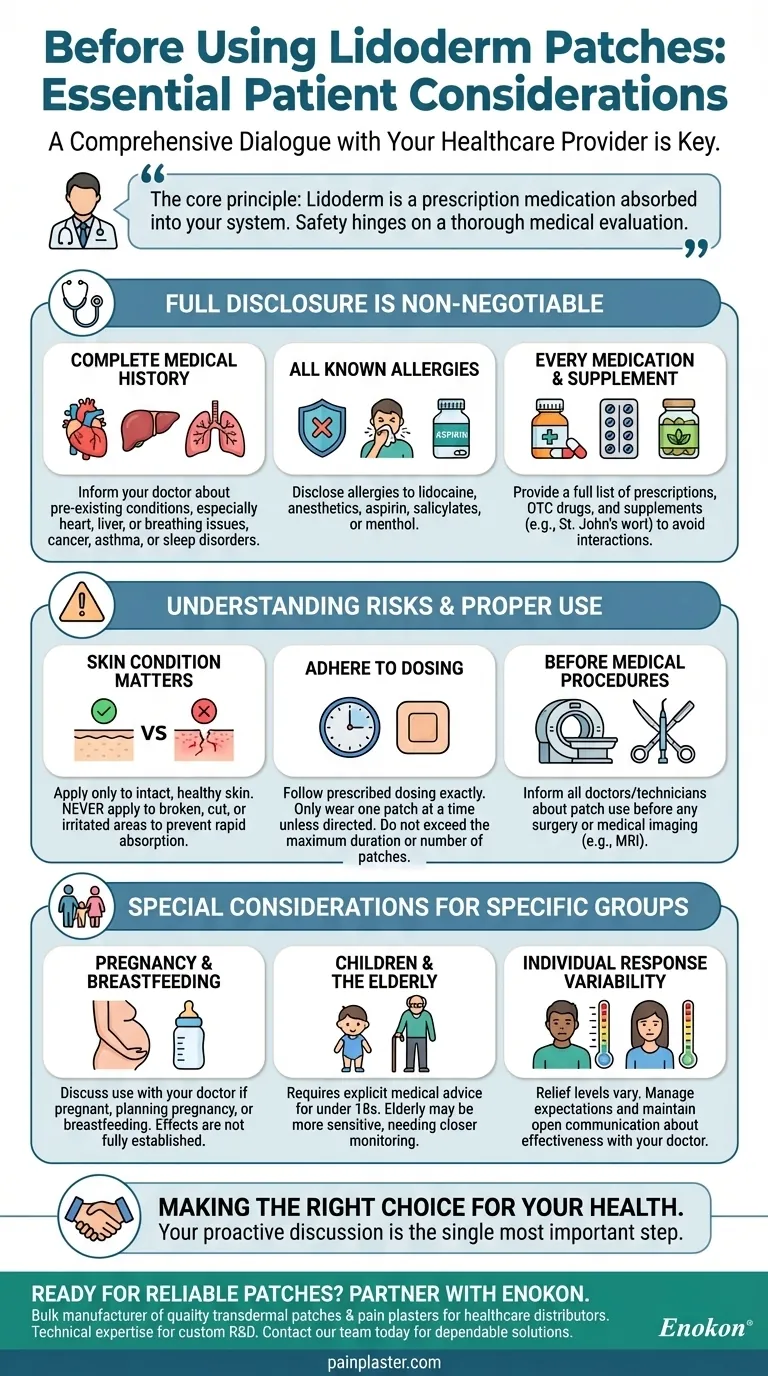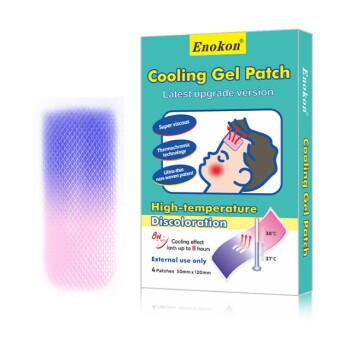Before using Lidoderm patches, you must have a comprehensive discussion with your healthcare provider. This conversation needs to cover your complete medical history, any allergies you have, and a full list of all medications, supplements, and over-the-counter products you are currently using.
The core principle to understand is that Lidoderm is not just a simple skin patch; it's a prescription medication that gets absorbed into your system. Its safety and effectiveness hinge entirely on a thorough medical evaluation to ensure it is appropriate for you and to prevent potentially harmful interactions.

Why Full Disclosure is Non-Negotiable
A Lidoderm patch contains lidocaine, a local anesthetic that can affect more than just the application site. Your body's ability to process this medication safely depends on your overall health, making a complete medical profile essential.
Your Complete Medical History
You must inform your doctor about any pre-existing conditions.
This is especially critical for issues with your heart, liver, or breathing, as these organs are involved in processing and clearing the medication from your body. Also, mention any history of cancer, unusual bleeding, asthma, or sleep disorders.
Any and All Allergies
An allergic reaction can range from mild skin irritation to a severe systemic response.
Be sure to disclose any known allergies, particularly to lidocaine or other anesthetics, as well as to aspirin, salicylates, or menthol, which can be found in other topical products.
Every Medication and Supplement You Take
Drug interactions can alter the effectiveness of the Lidoderm patch or cause dangerous side effects.
Provide your doctor with a complete list of all prescriptions, over-the-counter drugs, and herbal supplements you use. Pay special attention to products like St. John's wort, which is known to interact with many medications.
Understanding the Risks and Proper Use
Beyond your medical history, how you use the patch is critical for safety. Improper application or use can lead to adverse effects, ranging from skin irritation to systemic toxicity.
The Condition of Your Skin
The patch is designed for application on intact, healthy skin only.
Never apply a Lidoderm patch to skin that is broken, cut, scraped, or irritated. Damaged skin can absorb the medication much faster, increasing the risk of systemic side effects.
Adhering to Prescribed Dosing
Using more than the prescribed amount does not increase pain relief but significantly raises the risk of overdose.
Unless specifically directed by your doctor, you should only wear one patch at a time. Follow the exact instructions for how long to wear it and the maximum number of patches allowed in a 24-hour period.
Before Medical or Surgical Procedures
The patch can interfere with certain medical procedures and equipment.
Always inform your doctors, surgeons, or technicians that you are using a Lidoderm patch before any surgery or medical imaging, such as an MRI.
Special Considerations for Specific Groups
Certain populations require additional caution due to how their bodies may process the medication. These are not absolute prohibitions but require a careful risk-benefit analysis with a healthcare provider.
Pregnancy and Breastfeeding
The effects of lidocaine on a developing fetus or a nursing infant are not fully established. If you are pregnant, planning to become pregnant, or breastfeeding, you must discuss the use of Lidoderm with your doctor.
Children and the Elderly
Lidoderm patches should not be used on children under 18 without explicit medical advice. The elderly may also be more sensitive to the medication's effects, potentially requiring closer monitoring.
Individual Response Variability
It is important to recognize that not everyone experiences the same level of relief. Your individual response will vary, and it is crucial to manage expectations and maintain open communication with your doctor about the patch's effectiveness.
Making the Right Choice for Your Health
Your conversation with your healthcare provider is the single most important step. Use this information to prepare for that discussion.
- If your primary concern is avoiding side effects: Ensure your doctor knows about any liver, heart, or breathing conditions, as these directly impact how your body handles the medication.
- If you take other medications: Create a complete list, including over-the-counter drugs and supplements, to give your doctor the full picture and prevent harmful interactions.
- If you have sensitive skin or known allergies: Discuss any past reactions to adhesives, aspirin, or other topical products before you use your first patch.
A transparent and thorough conversation with your doctor is the key to determining if Lidoderm is a safe and appropriate choice for your pain management plan.
Summary Table:
| Key Consideration | Why It Matters |
|---|---|
| Full Medical History | Conditions like heart, liver, or breathing issues affect how your body processes the medication. |
| Allergies | Disclose allergies to lidocaine, anesthetics, aspirin, or menthol to prevent severe reactions. |
| Current Medications | List all prescriptions, OTC drugs, and supplements to avoid dangerous interactions. |
| Skin Condition | Patches should only be applied to intact, healthy skin to prevent rapid, unsafe absorption. |
| Dosing Instructions | Follow your doctor's prescription exactly to avoid overdose; typically, one patch at a time. |
Ready to provide safe, effective pain relief? Partner with Enokon.
As a bulk manufacturer of reliable transdermal patches and pain plasters, we provide healthcare and pharmaceutical distributors and brands with the quality and consistency they need. Our technical expertise supports custom R&D and development to create solutions tailored to your patients' safety profiles.
Contact our team today to discuss how we can support your product line with dependable, professionally manufactured patches.
Visual Guide

Related Products
- Herbal Eye Protection Patch Eye Patch
- Heating Pain Relief Patches for Menstrual Cramps
- Mugwort Wormwood Pain Relief Patch for Neck Pain
- Hydra Gel Health Care Eye Patch
- Capsaicin Chili Medicated Pain Relief Patches
People Also Ask
- How do eye patches enhance the effectiveness of eye creams? Boost Your Eye Care Routine
- What factors should be considered when purchasing eye patches? Essential Guide for Safe & Effective Use
- What are the main benefits of using eye patches in a skincare routine? Revitalize Your Under-Eye Area
- How quickly can you see results from using under eye patches? Instant Brightening & Long-Term Benefits
- What are the steps for applying under-eye patches? Boost Your Eye Care Routine

















